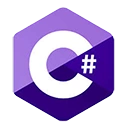Object-Oriented Programming (OOP) is a fundamental paradigm in C# and many other programming languages. In this introductory guide, you'll learn the core concepts of OOP and how to implement them in C#.
What is Object-Oriented Programming?
Object-Oriented Programming is a programming paradigm that organizes code into reusable, self-contained objects. These objects represent real-world entities, and they interact with each other through well-defined interfaces. OOP focuses on four main principles:
- Encapsulation: Bundling data (attributes) and methods (functions) that operate on that data into a single unit called a class.
- Inheritance: Creating new classes (subclasses or derived classes) based on existing classes (base classes or superclasses) to inherit their properties and behaviors.
- Polymorphism: The ability of different classes to be treated as instances of a common base class, enabling objects of different types to be used interchangeably.
- Abstraction: Simplifying complex reality by modeling classes based on real-world entities, hiding unnecessary details while exposing the essential features.
Classes and Objects
In C#, classes are used to define the blueprint for creating objects. Objects are instances of classes, and they contain both data (attributes) and methods (functions). Here's how you create a simple class and use it to create an object:
class Car
{
public string Make;
public string Model;
public void Start()
{
Console.WriteLine("Car is starting.");
}
}
// Creating an object of the Car class
Car myCar = new Car();
myCar.Make = "Toyota";
myCar.Model = "Camry";
myCar.Start();
Inheritance
Inheritance allows you to create new classes based on existing classes. The new class inherits the attributes and methods of the base class. For example:
class Vehicle
{
public string Make;
public string Model;
public void Start()
{
Console.WriteLine("Vehicle is starting.");
}
}
class Car : Vehicle
{
public void Accelerate()
{
Console.WriteLine("Car is accelerating.");
}
}
Car myCar = new Car();
myCar.Make = "Honda";
myCar.Model = "Civic";
myCar.Start();
myCar.Accelerate();
Polymorphism
Polymorphism allows objects of different classes to be treated as instances of a common base class. This enables you to work with a variety of objects interchangeably. For example:
class Shape
{
public virtual void Draw()
{
Console.WriteLine("Drawing a shape.");
}
}
class Circle : Shape
{
public override void Draw()
{
Console.WriteLine("Drawing a circle.");
}
}
class Square : Shape
{
public override void Draw()
{
Console.WriteLine("Drawing a square.");
}
}
void DrawShape(Shape shape)
{
shape.Draw();
}
Shape myShape = new Circle();
DrawShape(myShape);
myShape = new Square();
DrawShape(myShape);
Abstraction
Abstraction allows you to focus on the essential features of a class while hiding unnecessary details. You can create abstract classes and methods that serve as templates for derived classes. For example:
abstract class Animal
{
public string Name;
public abstract void MakeSound();
}
class Dog : Animal
{
public override void MakeSound()
{
Console.WriteLine("Dog barks.");
}
}
class Cat : Animal
{
public override void MakeSound()
{
Console.WriteLine("Cat meows.");
}
}
Animal myDog = new Dog();
myDog.Name = "Fido";
myDog.MakeSound();
Animal myCat = new Cat();
myCat.Name = "Whiskers";
myCat.MakeSound();
Conclusion
Object-Oriented Programming is a powerful paradigm that promotes code reusability, modularity, and maintainability. You've learned the core principles of OOP, how to create classes and objects, implement inheritance, utilize polymorphism, and apply abstraction in C#.
Practice these concepts in your C# programs to build efficient, well-structured applications. As you advance in your programming journey, you'll explore more advanced OOP features and design patterns to enhance your coding skills.

